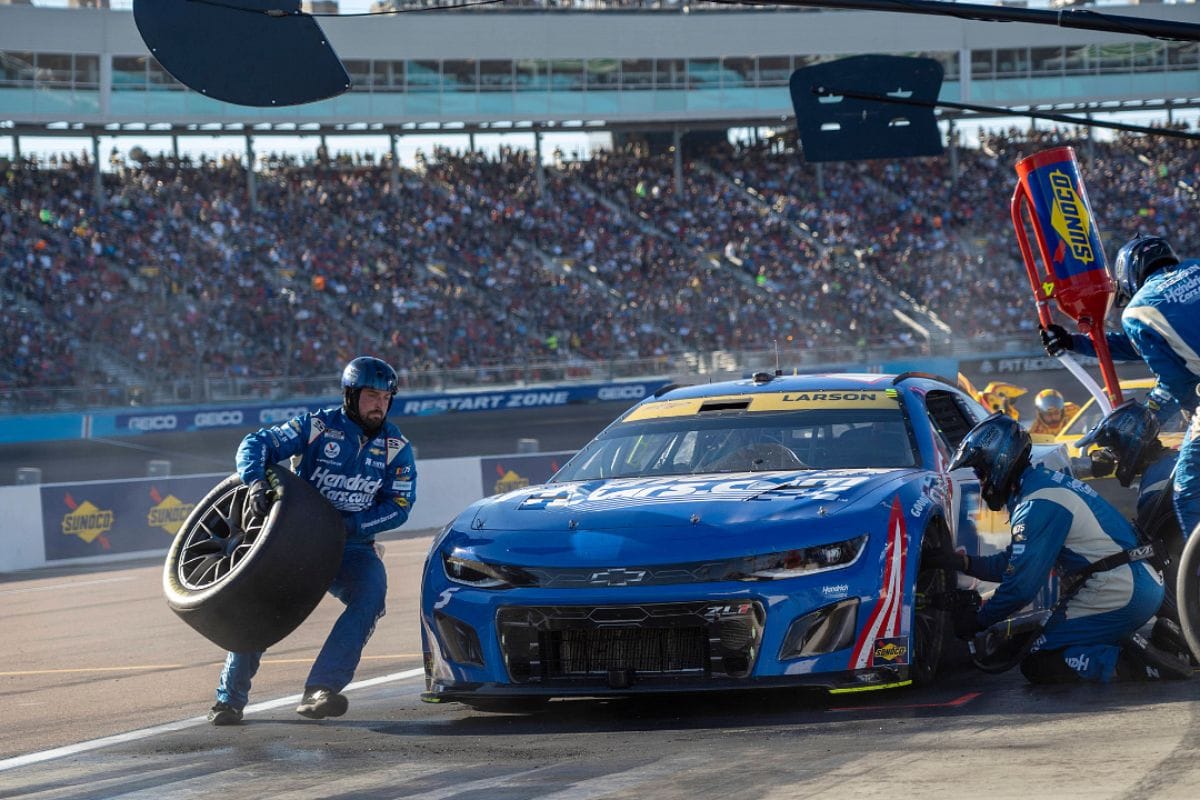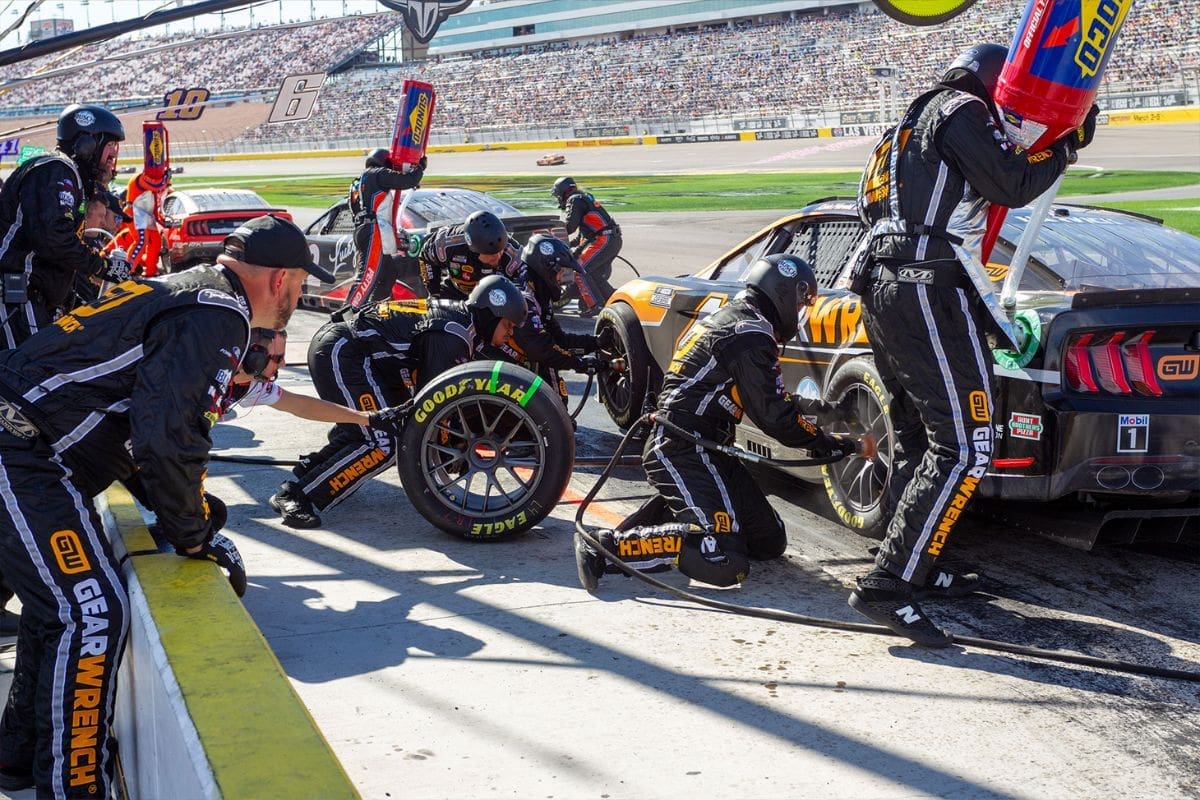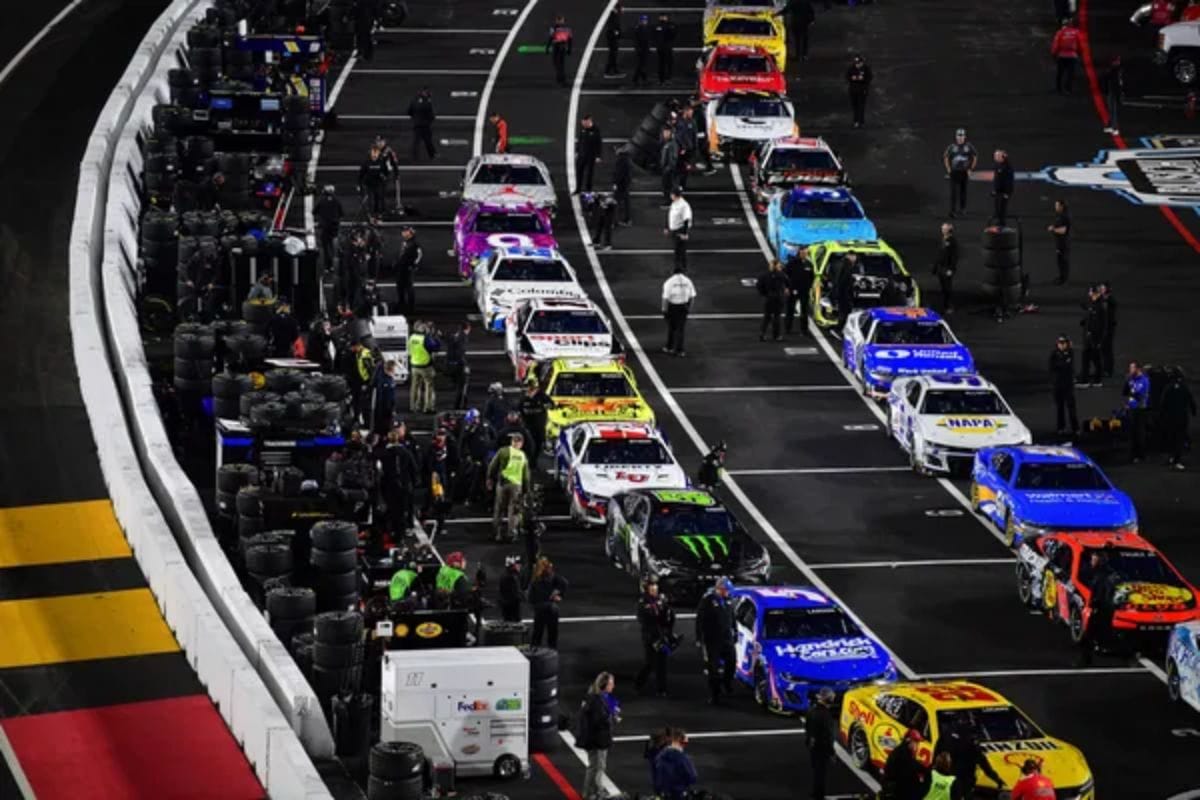Joe Gibbs Racing Reveals Hidden Secrets: Joe Gibbs Racing‘s recent disclosure regarding their pit stall strategy illuminates the critical role of tactical selection in competitive racing. By opting for stall number 1, JGR not only reduces collision risks but also improves overall lap efficiency—an approach rooted in extensive data analysis and historical performance metrics. This planning highlights an adaptive mindset that distinguishes leading teams from their competitors. However, the complexities of their decision-making process raise questions about how these strategies evolve in response to dynamic race conditions and competitor tactics, inviting a deeper exploration of the factors that influence success on the track.
Key Highlights
- Joe Gibbs Racing selects stall number 1 for unobstructed access, minimizing collision risks and enhancing lap time efficiency during pit stops.
- The team’s planning and historical data analysis inform their pit stall choices, ensuring competitive advantages throughout the race.
- Adaptability to changing race conditions and competitor strategies is essential for maximizing performance and maintaining top standings.
- Effective communication among team members is crucial for executing complex pit strategies and responding quickly to on-track incidents.
- JGR’s approach reflects an evolution in pit strategies, emphasizing the importance of technology and data analytics in race performance.
Michigan International Speedway Rain Delay and Race Postponement
Experiencing the interruption of a race due to inclement weather can greatly impact team tactics, as seen with the recent rain delay at Michigan International Speedway. The postponement of the FireKeepers Casino 400 to Monday at 11 a.m. ET not only disrupts the immediate competitive landscape but also necessitates a reevaluation of tactical approaches for the teams involved.
Ryan Blaney, who was leading at lap 51, now faces a unique set of challenges that could influence his performance upon resumption.
In the wake of a rain delay, teams must adeptly readjust their strategies to account for variables that may have changed during the interruption. Factors such as tire wear, vehicle performance, and even driver mental state can be greatly altered by the supplementary downtime. The elongated pause provides teams with an opportunity to analyze data collected from the earlier laps, allowing for potential adjustments in car setups or race strategies.
View this post on Instagram
Moreover, the postponement complicates logistical considerations, from fuel management to tire choices, all of which are essential in maximizing performance after the delay. Teams will need to remain agile, ready to implement last-minute changes to their game plan.
The resumption of the race will test not only the drivers’ skill but also the teams’ ability to adapt to the dynamic nature of their environment. Ultimately, the rain delay serves as a crucial crossroads that can redefine competitive trajectories for the remaining contenders.

The Importance of Pit Stall Selection
Pit stall selection plays a critical role in a team’s overall race strategy, influencing not only the efficiency of pit stops but also the driver’s positioning on the track. The location of a pit stall can greatly affect a team’s ability to execute quick and effective pit stops, which are essential for maintaining competitive track position. Proximity to the entrance and exit of the pit lane is must; stalls located closer to the start/finish line can minimize the time lost during pit stops, allowing drivers to rejoin the race more swiftly.
Additionally, the selection process itself is an intricate balancing act. Their tactical use of social media platforms, particularly Instagram, has clarified the meticulous planning that goes into pit stall assignments.
Moreover, the psychological aspect of pit stall selection cannot be underestimated. A well-placed stall not only aids in physical efficiency but can also enhance a team’s confidence. When a team is aware that they have a tactically advantageous stall, it builds a sense of preparedness that can translate into faster execution during high-pressure moments.
Joe Gibbs Racing’s Best Pit Stall in Michigan
How vital is pit stall selection in maximizing race performance? The answer lies in the tactical advantage it provides, especially in high-stakes environments like the Michigan race. Here, Joe Gibbs Racing (JGR) demonstrated its skill in selecting the ideal pit stall, a decision critical to minimizing time lost during pit stops. Following a stellar qualifying performance, JGR’s crew chief Chris Gabeheart secured the coveted primary pick, opting for stall number 1.
Choosing stall number 1 allowed Denny Hamlin to return to the race with unmatched speed, leveraging the stall’s tactical advantages. JGR’s emphasis on maximizing pit stall selection not only demonstrates their strategic expertise but also highlights the intricate interplay between qualifying performance and race day execution. This attention to detail is what sets elite teams apart, ensuring they capitalize on every potential advantage available in the relentless pursuit of victory.

Strategic Pit Stall Choices by Other Top Drivers
The tactical intricacies of pit stall selection extend beyond Joe Gibbs Racing, as other top drivers also engage in planning to enhance their race performance. The choice of pit stall can dramatically influence the efficiency of a team’s pit strategy, affecting everything from entry speed to the time spent in the box.
For instance, while Stall 1 is universally regarded as the prime choice on any track due to its advantageous positioning, drivers often weigh multiple factors that may lead them to select less obvious options.
Hendrick Motorsports emphasizes the importance of pitting ahead of competing cars to guarantee a clean entry into the pit box. Tyler Reddick’s crew chief, despite qualifying in P2, opted for Stall 6, suggesting a layered strategy that perhaps planned for peak tire management or fuel strategy rather than immediate pit lane proximity. This decision highlights the variability of crew chief tactics based on race conditions or car performance data.
Christopher Bell’s choice of Stall 11 may reflect a desire to mitigate traffic issues, while Kyle Larson’s decision for Stall 2 aligns closely with traditional wisdom, providing a clear path for entry.
Bubba Wallace’s selection of Stall 23 raises questions about his specific race strategy, possibly indicating an approach to capitalize on tire wear or pit stop timing.
The subtleties of pit stall choices among top drivers reveal a complex interplay between immediate race demands and long-term tactical planning.
Race Standings and Performance Before the Delay
As the race unfolded prior to the delay, tactical positioning became essential, with Chase Elliott in the No. 9 car capitalizing on his early advantage to secure the lead. His commanding performance presented an understanding of the track dynamics and tire management, allowing him to maintain a competitive edge.
Following closely was Martin Truex Jr., whose consistency kept him in the mix, while Bubba Wallace displayed his skill, temporarily leading the race and reinforcing his playoff aspirations.
However, the race was not without its disappointments. Denny Hamlin, starting from the pole position, found his fortunes drastically reversed as he battled for position against Kyle Larson. A critical misjudgment led to a spin-out, relegating him to the back of the pack. This incident shows the volatile nature of NASCAR racing, where a single misstep can dramatically alter the path of a competitor’s race.
In the top five standings, Elliott, Truex Jr., and Wallace were joined by Alex Bowman and Tyler Reddick, all of whom exhibited strong racing strategies.
Kyle Busch‘s rise from P12 to P6 demonstrated his need for a solid finish to enhance his playoff hopes. As the drivers navigated the complexities of the track, the decisions made in these early laps would prove essential, emphasizing the importance of tactical positioning and adaptability as the race progressed.
News in Brief: Joe Gibbs Racing Reveals Hidden Secrets
Joe Gibbs Racing‘s tactical emphasis on pit stall selection highlights the essential role of planning and data analysis in competitive racing. By prioritizing ideal access and minimizing collision risks, JGR improves total lap time efficiency, a vital factor in achieving championship goals. The adaptability shown by JGR, alongside the tactical choices of other top drivers, emphasizes the dynamic nature of race conditions and the importance of effective communication within a high-stakes environment.
ALSO READ: NASCAR Pitstop Challenges: Joe Gibbs Racing Reveals Key Secrets



